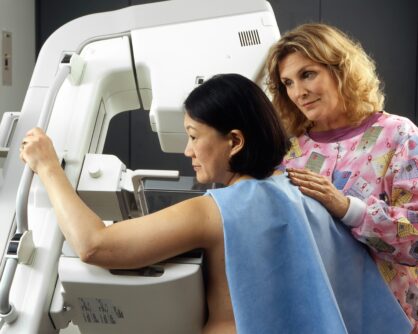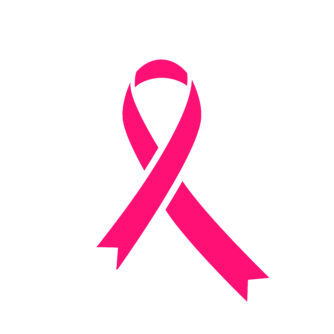October is recognized globally as Breast Cancer Awareness Month, a time dedicated to raising awareness about breast cancer, its impact on millions of women and men, and the crucial role early detection plays in saving lives. One of the most powerful tools in the fight against breast cancer is the mammogram—a screening technique that has been instrumental in detecting cancer early, when it is most treatable. Understanding the importance of regular mammograms and maintaining breast health is essential for reducing the risk of breast cancer and improving survival rates.

What is a mammogram?
A mammogram is a low-dose X-ray used to examine breast tissue, allowing doctors to identify abnormalities or changes that could indicate breast cancer. It is the most common and effective method for screening breast cancer, especially in its early stages before symptoms develop. There are two types of mammograms:
Screening mammograms: These are routine checks for women who do not have any symptoms. They are typically done annually or biennially, depending on age and risk factors.
Diagnostic mammograms: These are performed when a person has symptoms, such as a lump or unusual breast changes, or when an abnormality is detected during a screening mammogram.
Mammograms can detect tumors that are too small to be felt, often catching breast cancer before it spreads, which significantly increases the chances of successful treatment.
Early Detection
Early detection of breast cancer is key to effective treatment and improving survival rates. Studies show that early-stage breast cancer, when confined to the breast, has a 99 percent five-year survival rate. Mammograms play a vital role in early detection, as they can reveal cancer up to three years before it can be felt by physical examination.
The earlier breast cancer is detected, the less aggressive treatment is required, and the better the outcome. Regular mammograms not only detect cancer but can also identify calcifications, cysts and other benign conditions that can be monitored or treated as needed.
When Should Women Begin Getting Mammograms?
There is some variation in guidelines regarding when women should begin mammogram screenings. The American Cancer Society recommends that women at average risk start getting annual mammograms at age 45, with the option to begin at age 40. By age 55, women can switch to biennial screenings or continue yearly mammograms. Women with a higher risk, such as those with a family history of breast cancer or certain genetic mutations, should start earlier and may require additional screening methods like MRIs.
It’s important for women to have conversations with their healthcare providers to determine the most appropriate screening schedule based on personal risk factors.
Breast Cancer Risk Factors
Several risk factors can increase the likelihood of developing breast cancer. Some are beyond one’s control, while others can be managed through lifestyle changes. Common risk factors include:
- Age: The risk of breast cancer increases with age, especially after 50
- Genetics: Inherited mutations in genes like BRCA1 and BRCA2 can significantly raise the risk of breast cancer
- Family history: Having close relatives who have been diagnosed with breast cancer can increase your risk
- Hormone therapy: Long-term use of hormone replacement therapy (HRT) has been linked to higher breast cancer risk
- Lifestyle factors: Smoking, excessive alcohol consumption, a sedentary lifestyle and poor diet can all contribute to increased risk.
Maintaining breast health by managing controllable risk factors—such as exercising regularly, limiting alcohol intake and maintaining a healthy weight—can help reduce the likelihood of developing breast cancer.
Understanding Breast Changes
It’s important to be familiar with the look and feel of your breasts to detect any changes that may indicate a problem. While mammograms are the gold standard for breast cancer screening, self-exams and clinical breast exams are also valuable tools in maintaining breast health. Be on the lookout for:
- Lumps or thickened areas
- Changes in breast size or shape
- Dimpling or puckering of the skin
- Nipple discharge or inversion
- Redness or scaling of the breast skin or nipple
If any of these changes occur, it’s critical to consult a healthcare provider for further evaluation, as these symptoms can be indicative of breast cancer or other conditions.
Dispelling Myths
Despite their effectiveness, there are common myths and misconceptions about mammograms that can deter women from getting screened. Some believe that mammograms are too painful or that they are unnecessary if there are no symptoms. While mammograms can cause some discomfort due to the compression of breast tissue, it is brief, and most women find the experience manageable. As for symptoms, breast cancer can often develop without noticeable signs, which is why routine mammograms are essential, even for women who feel perfectly healthy.
Another myth is that mammograms expose patients to harmful levels of radiation. The radiation dose used in a mammogram is very low and the benefits of early cancer detection far outweigh the minimal risks associated with the exposure.
Breast Cancer Awareness Month: A Time to Take Action
Breast Cancer Awareness Month, observed every October, serves as a reminder of the importance of early detection and breast health. The pink ribbon, a symbol of the movement, is widely recognized, and numerous events, fundraisers, and campaigns are organized to support breast cancer research, education and patient care.
During this month, women are encouraged to prioritize their breast health by scheduling mammograms, practicing self-awareness, and advocating for others to do the same. Communities come together to honor survivors, support those undergoing treatment, and remember those lost to breast cancer. It is also an opportunity to educate the public about risk factors, preventive measures, and the importance of regular screenings.
Mammograms are an essential tool in the early detection of breast cancer, offering women the best chance of catching the disease in its most treatable stages. As we observe Breast Cancer Awareness Month, it’s important to spread the message that regular screenings, self-awareness and proactive healthcare can save lives. By understanding the importance of mammograms and taking control of our breast health, we can continue to make strides toward reducing the impact of breast cancer worldwide.
















